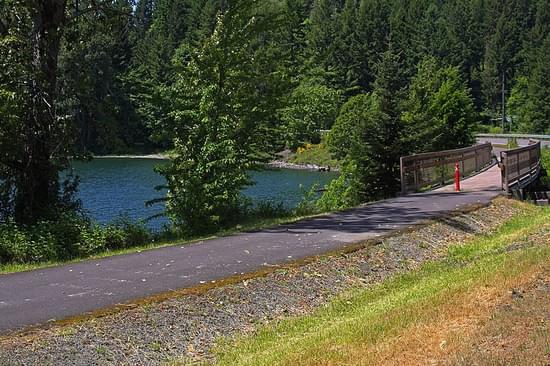




The best answer that you will get for how wide a trail should be is “It depends.”

Could you tell me the typical width of a shared-use trail? The reason is, my city is proposing to build mountain bike trails on a very steep hillside above several residences.
The trail building company calls these multi-use but the widths seem too narrow to safely accommodate hikers and bikers at the same time. The tread widths are 30" and 24".
The best answer that you will get for how wide a trail should be is “It depends.” There are multiple criteria that are needed to take into consideration for a sustainable trail design. Some criteria are soil type, geography, terrain, watershed size, use, level of difficulty, tread type, etc.
Assuming the real question is if it is reasonable to have a mountain biking and hiking shared use trail width be 24” – 30”, the answer is “Yes, it can be reasonable, assuming that the trail is designed in a sustainable way that takes into consideration all of the factors that come into play in trail design”. If the trail goes straight up the hill, it is not well designed and should be questioned for a lot of reasons beside just the trail width. If the trail meanders along the hillside as it slowly climbs up the hill, it is probably a well-designed trail.
If you need a reference to best management practices, probably one of the best resources for this is Trail Planning, Design, and Development Guidelines, produced by the Minnesota Department of Natural Resources. Chapter 6 focuses on natural surface trails. Page 6.2 covers some tread width suggestions by use and difficulty levels. A single-track mountain bike trail is commonly between 12"-30", according to the guide. With this width it is assumed that hiker will have to step aside to allow bicycles to pass.
For an urban, pathed trail the width is much greater. According to the WSDOT Shared-Use Design Manual, "The desirable paved width of a shared-use path, excluding the shoulders on either side, is 12 feet. The minimum paved width, excluding the shoulders on either side, is 10 feet."
Finally, for mountain bike trail guidelines, get in touch with The International Mountain Bicycling Association (IMBA). Their staff has experience on over 400 trail projects worldwide, according to their website.
posted May 24, 2021
Are there any graduate programs that are focused on trail planning, development, and design?
FAQ: Apps for Trail Management and Volunteers
posted May 19, 2021
Information on apps that can be used for trail management that would be suitable for volunteer-type organizations.
FAQ: What is the definition of a trail?
posted Jan 14, 2021
Defining a trail corridor in law, policy, and planning.
8,117 views • posted 02/03/2020